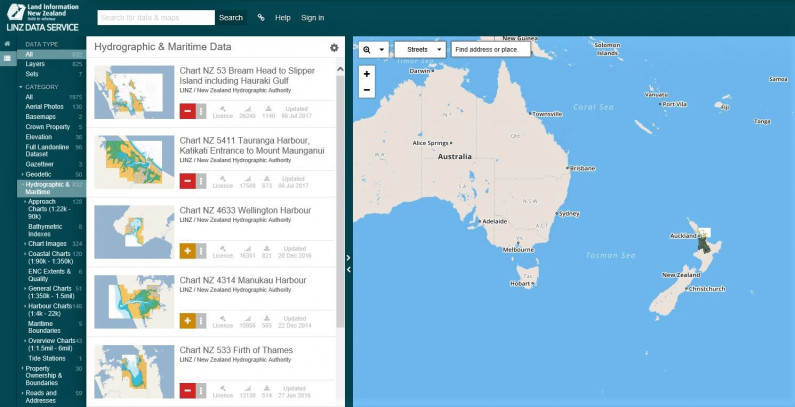LINZ Data Service

Purpose of agency
Land Information New Zealand (LINZ) is the government department responsible for land titles, geodetic and cadastral survey systems, topographic information, hydrographic information, and managing Crown property.
What has been released for re-use?
LINZ Data Service (LDS) holds more than 40 groupings of data on New Zealand’s land and sea, including:
- topographic data used to create maps and hydrographic information used to create marine charts
- property from place names and addresses to boundaries and land ownership
- Crown pastoral land leases and our geodetic system
- aerial images which provide an accurate photographic picture of the land’s surface.
Data is freely available in many commonly used and standards-based geospatial formats and projections to ensure interoperability across commonly used systems and processes. Most is licensed for the widest re-use possible under a Creative Commons Attribution 3.0 New Zealand licence (CC-BY) licence. Exceptions are property and ownership layers containing personal information. Users must accept an additional licence before they get access to this data.
Reasons for release
- Improving efficiency in using LINZ data across local and central government.
- Stimulating growth and innovation based on using LINZ data.
- To be a leading example of the NZ Spatial Data Infrastructure.
- Responding to customer demand and market research.
- Addressing outdated data access arrangements which did not enable easy re-use.
Barriers to release
Misuse of data and privacy – finding the balance between ensuring people’s privacy and providing open data. Risk has been minimised by requiring users to accept a more restrictive license to view property and ownership layers that contain personal information.
Customer expectations - potential risks included addressing increased demand for support services or improvements to the data, and market confusion about the aims of the LDS. Mitigation measures included engaging an industry user group, a strong communications plan, and active environment scanning for emerging issues.
Breaking new ground - this innovative project risked under-use, an inability to deliver to the NZ Geospatial Strategy standards, and resistance from industry, particularly those whose work could be displaced. Consultation continued throughout the project.
Economic and social impacts
- GPS-it supports their mapping tools with LINZ property datasets, ensuring their clients always have accurate and up-to-date data. They have made substantial savings sourcing LINZ data from LDS rather than a third party provider.
- Waka Digital has developed a fisheries management tool (eFish) using LINZ topographic maps, making it easier for iwi to monitor fishing levels in their coastal and marine areas.
- Resiliency Insights Ltd makes extensive use of the LINZ Data Service as the basis for its custom-designed maps.
- Navman GPS technology company loads LINZ maps into its popular hand-held Magellan eXplorist GPS receiver, a rugged waterproof outdoors unit for users to self-navigate when camping, hiking, geocaching and hunting in NZ.
- Nigel Cowburn, landscape architect, delivers substantial cost savings to his clients by using LDS data to conduct much of the initial planning for landscape projects remotely.
- QuickMap is an online business delivering user-friendly maps and property information making for faster property conveyance by lawyers, in turn leading to lower costs for their customers.
Efficiency impacts
- Napier City Council uses LINZ Data in their online mapping tool, GIS.Napier, automating the update process using the LDS web feature service.
- Greater Wellington Regional Council has integrated LDS data into their new regional map viewer, providing residents with greater insights into services and utilities in their locality.
- Ministry for Primary Industries has integrated LINZ data into its online portal for calculating forestry carbon credits. This led to cost and time savings for government and foresters from avoiding errors in data matching. The Ministry also uses LDS data in their FarmsOnLine and Climate Change applications, complementing other data sources.
- Ministry for the Environment uses LDS to discover and download many LINZ datasets, including marine maps.
Internal efficiency impacts
- National Topographic Office updates their maps using the LDS to source Cadastre and Hydro data and aerial imagery.
- The LINZ Pastoral Team has mashed up LDS data with other sources, making it easier and faster to respond to requests.
- New Zealand Hydrographic Authority uses topographic data to consolidate and simplify how it captures land detail, whilst ensuring consistency between LINZ topographic and hydrographic products.
- Imagery layers are being used directly to create products.
- Metrics of the LDS give a clear picture of the datasets in highest demand, leading to better prioritisation of data update effort.
This case study was last updated in December 2014.
